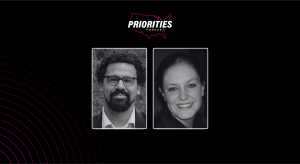Maryland’s 2025 AI roadmap targets 12 ‘critical domains’ for growth

Maryland’s technology department and Gov. Wes Moore’s Artificial Intelligence Subcabinet on Tuesday submitted to the state legislature a landmark planning document outlining the state’s artificial intelligence strategy for the coming year.
The 17-page plan, titled the 2025 Maryland AI Enablement Strategy & AI Study Roadmap, contains a five-point strategy for speeding along the state’s adoption of AI, along with detailed plans for advancing AI in 12 “critical domains,” such as workforce, critical infrastructure and public safety.
Maryland’s strategy includes improving AI governance and data governance, increasing adoption of AI, boosting the AI literacy of state employees, and studying the risks, opportunities and approaches to AI found in each of the domains outlined by Maryland’s AI Governance Act of 2024.
Each of the 12 domains in the roadmap sets timelines for gathering information from agencies and delivering analyses and recommendations to improve the state’s operations.
Nishant Shah, Maryland’s senior adviser for responsible AI, told StateScoop that developing the roadmap consisted of meeting with department heads, academics, industry experts and community organizers over roughly two months. He said one of their priorities was to find the “data, trends and voices” specific to the region.
“In a lot of these critical domains there’s a bunch of scholarship happening and journal articles that come out on a consistent basis and reports from places like Brookings [Institution] and [the Center for Democracy and Technology], and others, which are fantastic, but they tend to be national in nature and not really rooted in our specific assets and core infrastructure and the things that make Maryland Maryland,” Shah said.
For instance, the roadmap’s section on cybersecurity calls for an examination of the risks that AI technologies pose to Maryland’s cybersecurity posture and also how Maryland might use AI to improve the cybersecurity policies set by the Maryland Department of Information Technology. A cybersecurity risk framework, a prioritized list of AI uses and pilot projects are due by next December.
“The results will inform iterations to our existing cybersecurity processes, data management approaches, software intake flow, and potential pilots, and build on the AI and data inventories conducted in 2024,” the document reads.
Shah, a member of the governor’s AI Subcabinet, also leads Maryland’s AI enablement team, a three-person group that he said is still defining its charter, but that will provide some level of service to agencies as they grow their AI efforts.
“To start, we see ourselves building out a center of excellence incubation shop,” Shah said. “[And] we do know on the governance side we’ll be drafting the policies.”
As Maryland’s AI strategy explains, 2024 was “foundation-building,” while 2025 is intended for “experimentation and momentum-building” in the state. Shah said he expects the coming year to bring new AI workflows, incubated to adolescence by his enablement team, which will then be placed in permanent homes throughout the state government, depending on which agencies have the resources to support them.
“Once we incubate those types of workflows to teams across the state where they can actually live,” he said. “That’s the only way to make this sustainable.”






